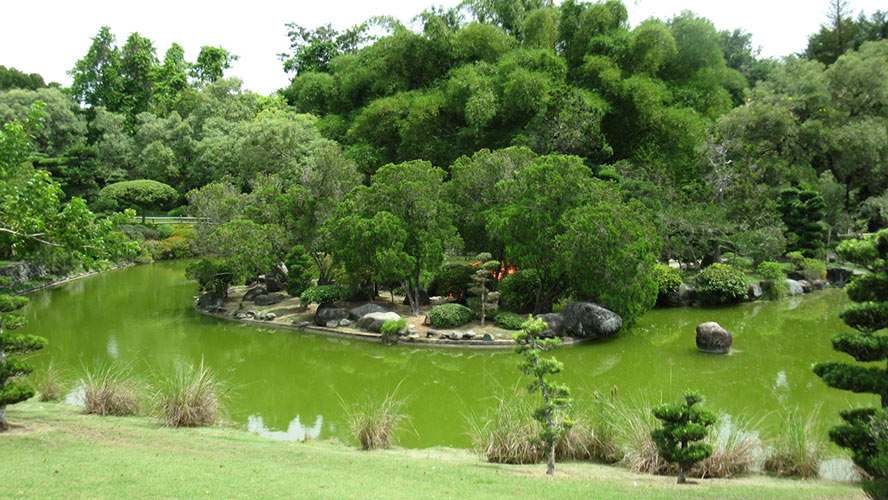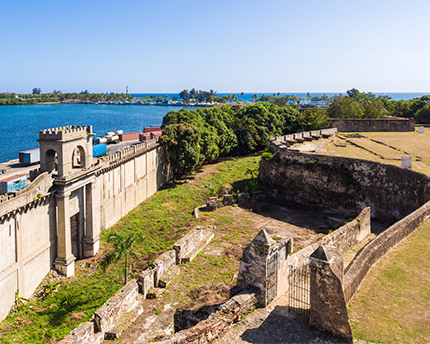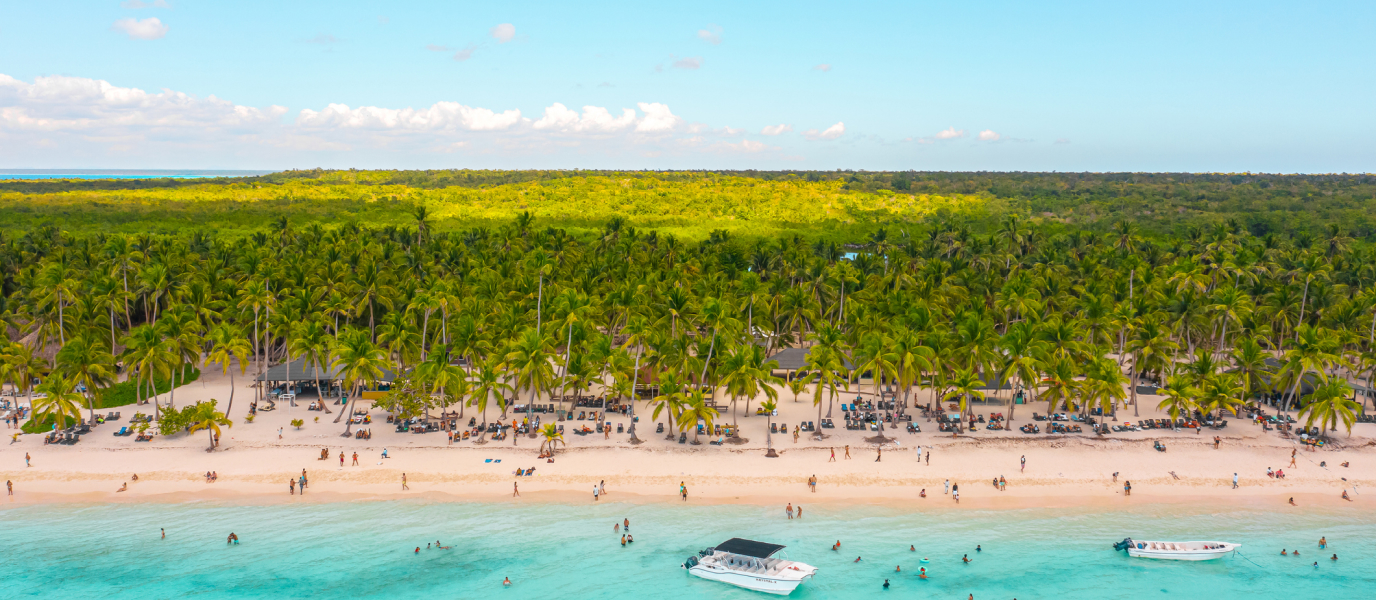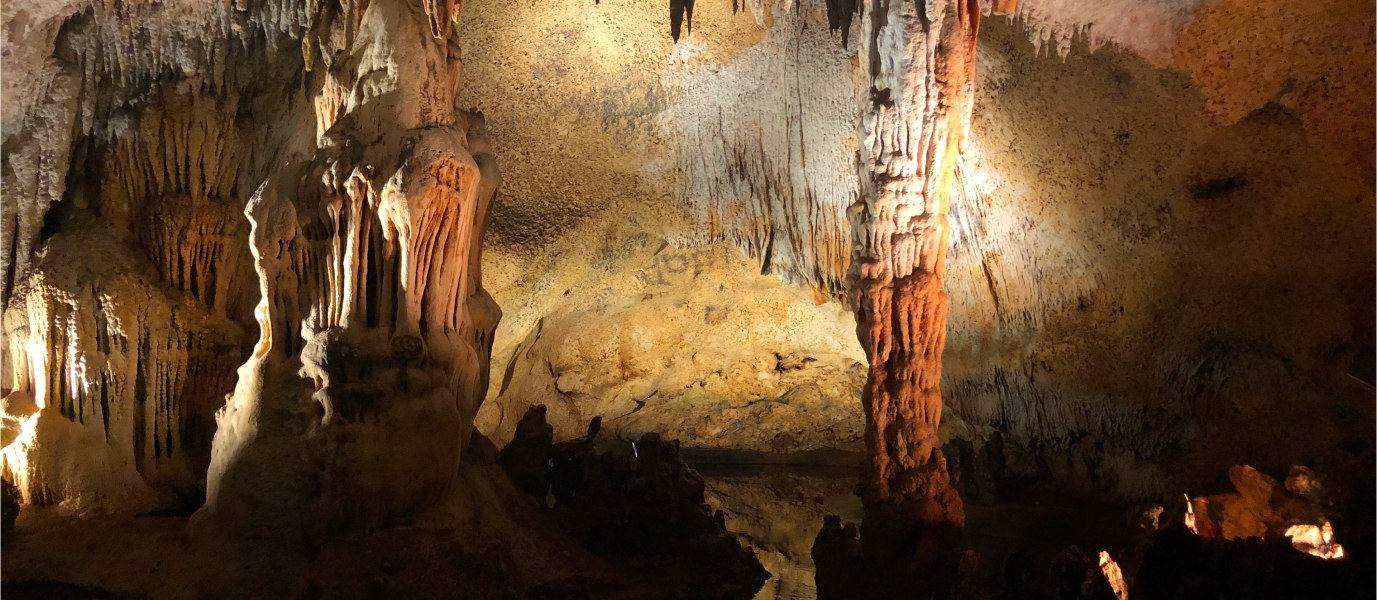On August 5, 1498, Bartholomew Columbus, the admiral’s younger brother, founded the first European city in America that, 500 years later, remains just as populated and lively as ever. From its rich colonial past to its modern and dynamic present day reality, the Capital of the Dominican Republic is a destination with countless possibilities. History, art, culture, food, nightlife, sports, shopping and more. Book a trip to Santo Domingo and discover a city that will sweep you off your feet.
THINGS TO SEE AND DO IN SANTO DOMINGO
A surprise awaits at every corner of the capital of the Dominican Republic. Simply walking down its streets is enough for you to fall helplessly in love with this Caribbean treasure, but to really get to know it, here is a list of some of Santo Domingo’s most beautiful and interesting landmarks. Don’t miss out!
-
Santo Domingo’s Colonial City, where Europe discovered America
Declared a UNESCO World Heritage Site in 1990, the Colonial City of Santo Domingo is a true architectural and cultural jewel. The city’s most important historic buildings, many dating back to the 16th century, can be found along its streets and squares. Museums, shops, bars and restaurants also contribute to the excellent atmosphere of this historic neighborhood.
So put on a pair of comfortable shoes and let’s get started! Here’s a tip: you can also rent a bike. And be sure to check out the first cobblestone street in America.
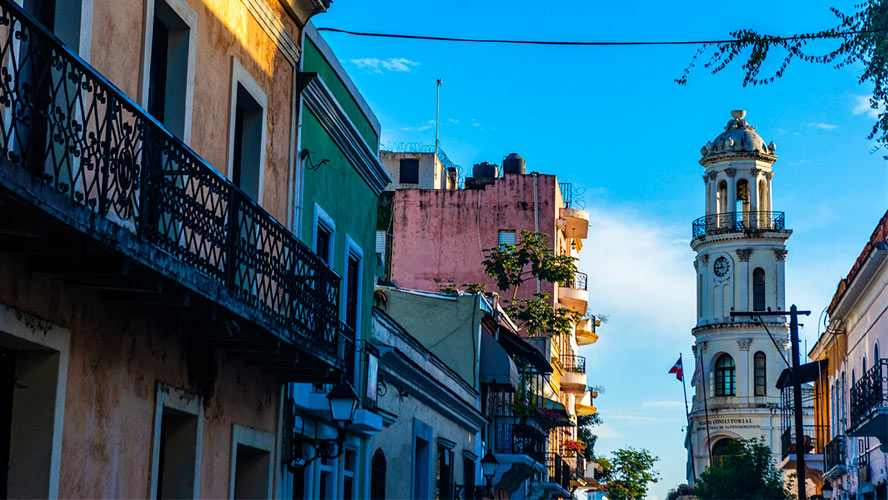
-
Santo Domingo Cathedral, the first in the New World
Located in the heart of the Colonial City, Santo Domingo Cathedral was the first of its kind in the New World. Construction on this magnificent Gothic-style building with Renaissance details began in 1512, although new elements were added over time, increasing its historic and cultural value. The interior houses a rich collection of treasures, many from the conquest era, ranging from works of art to antique furniture and funeral headstones of archbishops. The cathedral also contains the tomb that held Christopher Columbus’s remains until 1795.
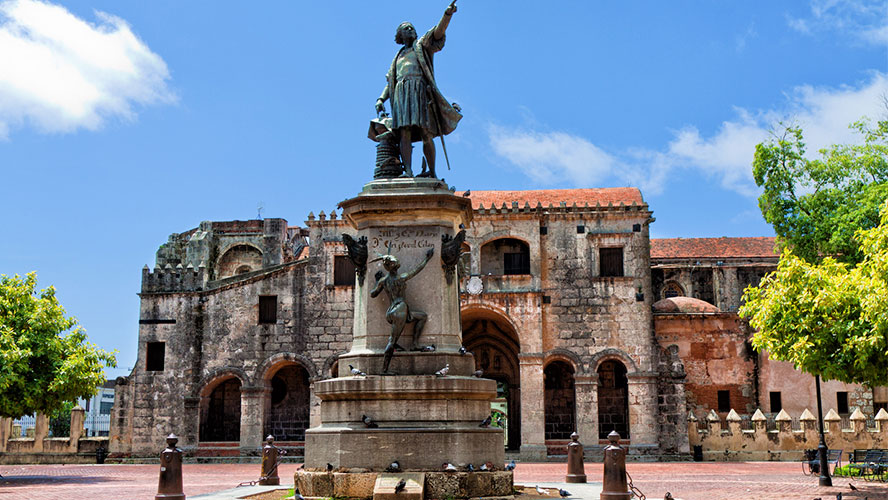
-
Baluarte del Conde, the gate to Santo Domingo
A number of interesting monuments that tell the history of Santo Domingo can be found on the eastern end of the Colonial City. Known as Baluarte del Conde or Puerta del Conde (the Count’s Bulwark), this section of the old city wall is the spot where the Dominican Republic proclaimed its independence in 1884. Today, it serves as the entrance to Independence Park, which houses the Altar of the Fatherland. Next to it is Fuerte de la Concepción, a 17th-century fortress that also formed part of the ancient wall.
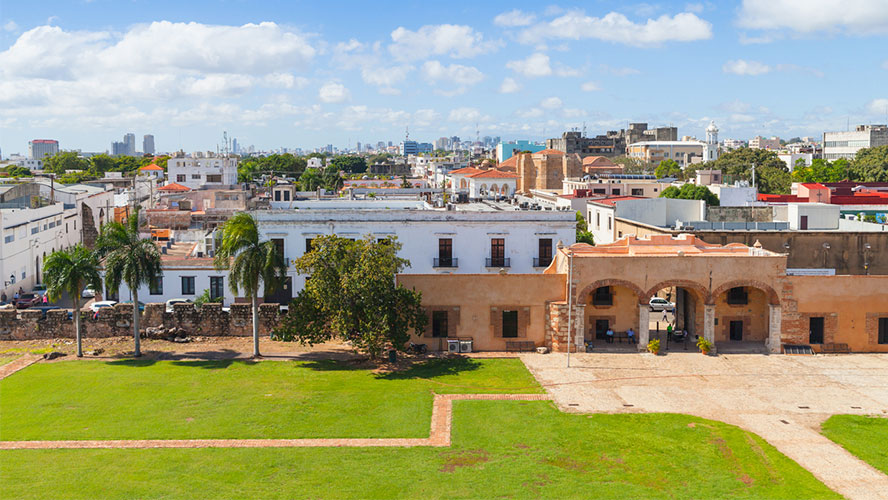
-
Calle El Conde, the city’s most famous street
The most famous pedestrian street in Santo Domingo, Calle El Conde, stretches out across 10 blocks, from Puerta del Conde to the river, crossing through Columbus Park and Consistorial Palace. Visitors should walk from one end to the other to take in its atmosphere; grab a bite, ice cream or coffee; check out the shops; admire the historic buildings and more. This cobblestone street is one of the oldest main streets with shops in the New World and the perfect place to experience all of the Dominican capital’s charm.
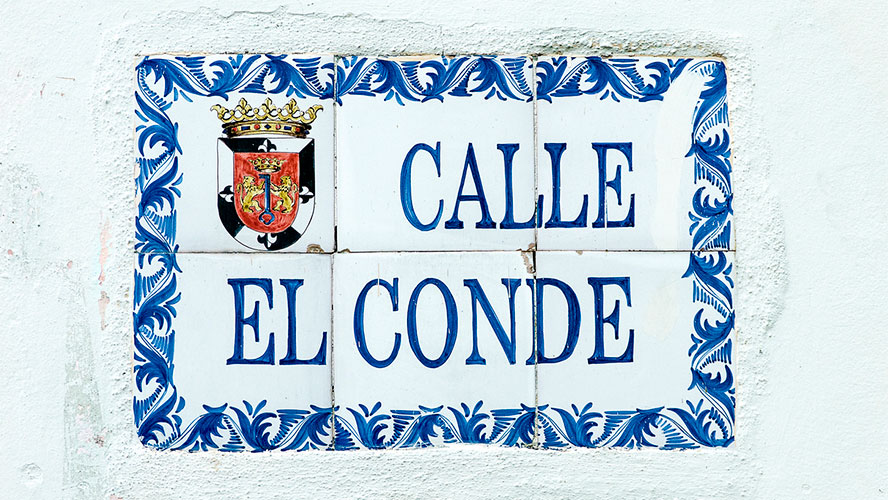
-
Columbus Alcazar, the first palace in America
Located between the Ozama River and Plaza de España, the Columbus Alcazar is one of the most important historic buildings in Santo Domingo and one of its most popular museums. This palace fortress with a Gothic and Renaissance style was built in the early 16th century as the home of Diego Columbus (son of Christopher Columbus and governor of Hispaniola) and his wife, María Álvarez de Toledo, niece of Spain’s King Ferdinand II, making it the oldest viceregal residence in America. Inside, the Columbus Alcazar Museum has on display a priceless collection of medieval and Renaissance objects and furniture that reflect 16th-century Spanish aristocratic life in the Americas.
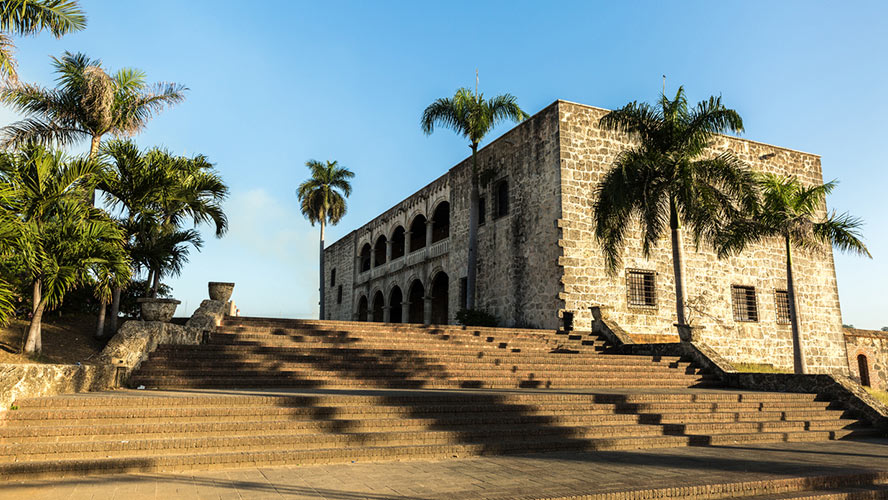
-
Columbus Park, the heart of Santo Domingo
Next to the cathedral, and featuring a large statue of the person who discovered America, Columbus Park is the heart of Santo Domingo. Always bustling and filled with pigeons, tourists and locals, the square has a late 19th-century appearance, although in 1506 it was already the largest square in the old Colonial City. A great way to recharge your batteries before continuing to explore the Dominican capital is to sit on one of the benches, under the shade of the great trees, and listen to the music of one of the merengue groups that usually play there.
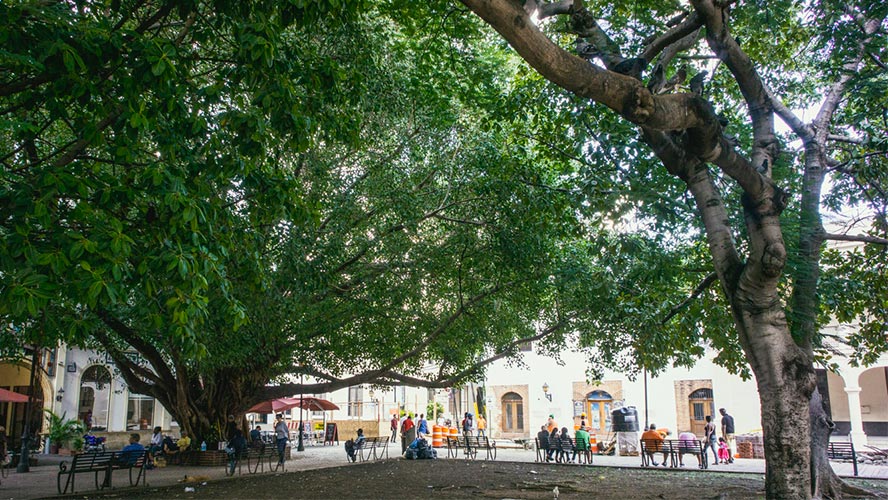
-
Museum of the Royal Houses, a glimpse into history
The Royal Court of the Spanish governor in the 16th century, headquarters of the governor’s palace, the treasury and the courts of justice, this important historic building by the river, near Columbus Alcazar, was a key part of the administrative structure during the colonial era. Transformed into the Museum of the Royal Houses, this interesting landmark houses several exhibitions about the history of Santo Domingo, from Columbus’s journeys to the Trujillo dictatorship era.
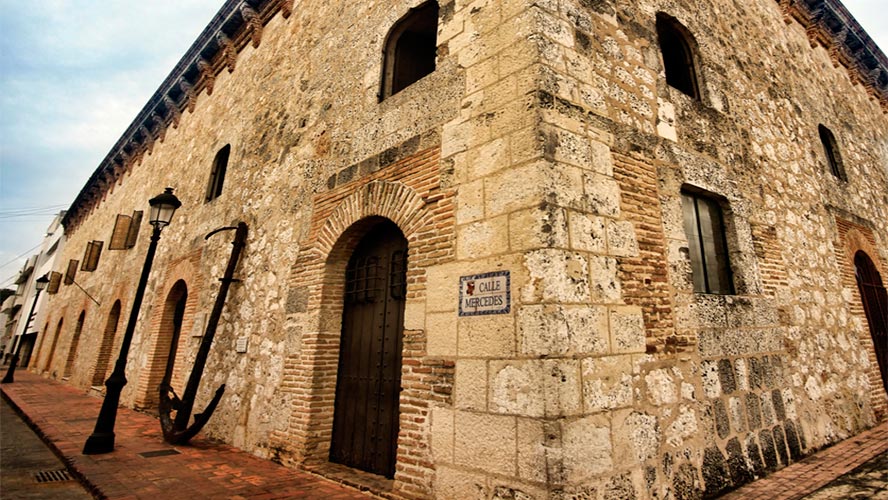
-
Ozama Fortress, guarding over Santo Domingo
On the same bank as Santo Domingo’s old quarter, near the Royal Houses and by the mouth of the river it is named after, Ozama Fortress is another colonial treasure and one of the city’s most important monuments. Built by Spanish conquistadors at the start of the 16th century, it was the first military fortress in America. The medieval tower, more than 65 feet high, watches over and protects the entrance to the city along the river and the Caribbean Sea. Before leaving, take the spiral staircase to the top of the tower because the views are spectacular, and then explore the tunnels and dungeons, but always keeping track of the way out!
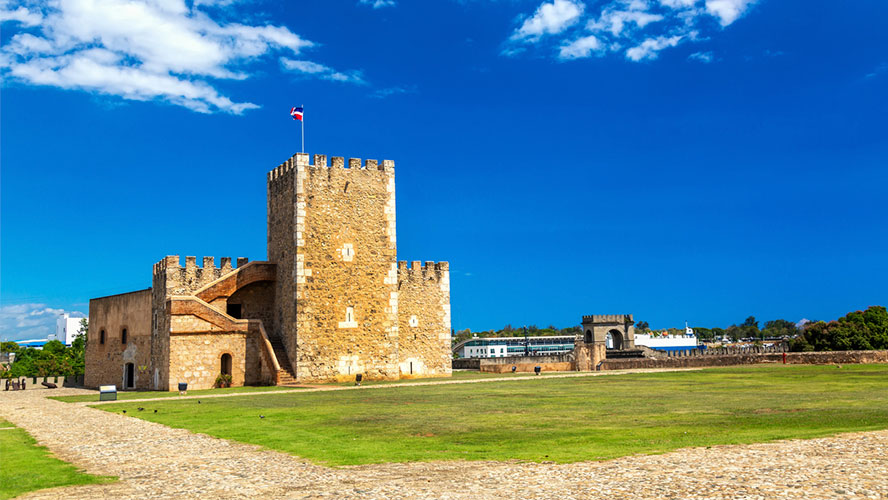
-
Columbus Lighthouse, a great tribute to the explorer
Upon leaving the Colonial City and crossing to the other side of the Ozama River, there is a large monument and museum honoring the person who discovered the New World. This impressive spot is known as Columbus Lighthouse. Built to commemorate the 500th anniversary of America’s discovery, this enormous cross-shaped building, approximately 2,600 feet long and 40 feet high, is said to be the place where Christopher Columbus’s remains have been laid to rest. The lighthouse also has a museum on Latin American people as well as rooms with temporary exhibitions.
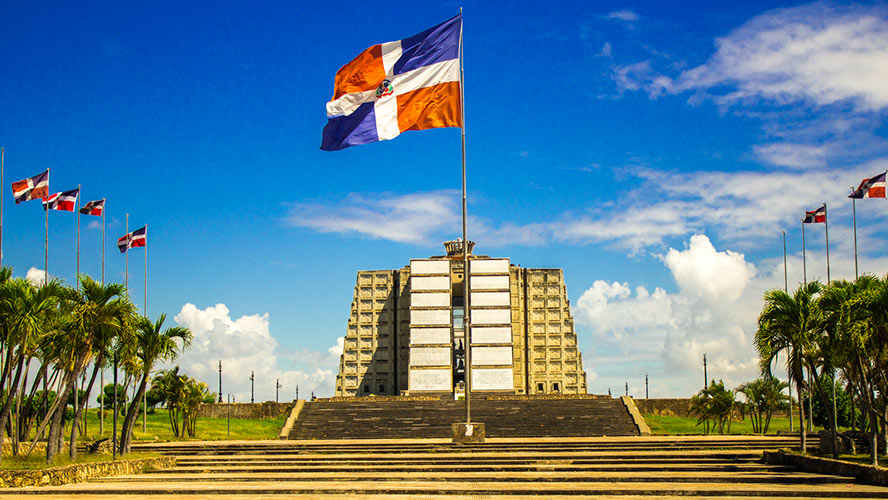
-
Three Eyes Cave, a natural treasure in the heart of the city
Columbus Lighthouse lies at one end of Mirador del Este Park—a large space stretching out approximately 1.2 miles—and a gorgeous natural landmark awaits on the opposite side: the Three Eyes Cave (Cueva de Los Tres Ojos). Officially called Los Tres Ojos National Park, this oasis in the middle of the city is made up of an incredible set of caves with several lakes inside. Make your way along the trails and steps that invite visitors to explore the park, and pay special attention so as not to miss the rupestrian drawings and petroglyphs that Tainos carved on the cave walls many years ago.
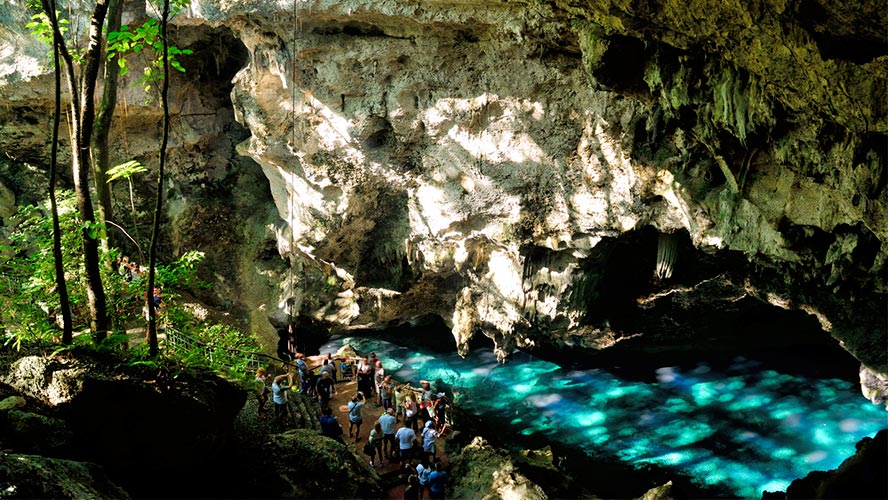
-
National Aquarium, a marine festival
Another landmark near Columbus Lighthouse and right on the river is the National Aquarium, the perfect place to learn about the Dominican Republic’s rich marine life. Hawksbill turtles and manatees are just some of the most famous “guests,” but the biggest attraction is the underwater tunnel. This amazing glass passageway makes it possible to see all types of fish, rays, turtles and sharks, just as if you were swimming underwater with them. It is quite a sight to see!
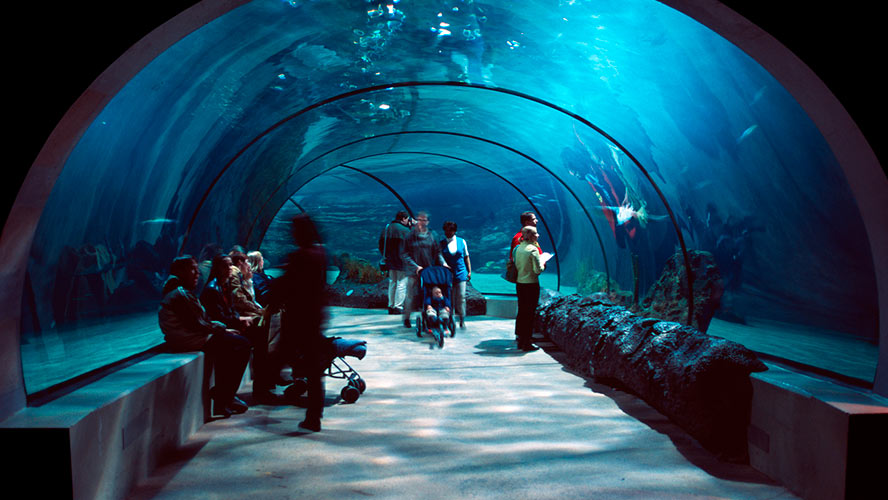
-
National Botanical Garden, 100% nature
Another spot that nature lovers will adore is the National Botanical Garden and its 400 acres of paradise. This is the largest botanical garden in the Caribbean. There are tropical trees, palm trees, more than 300 orchid species, countless birds and more. Take the train tour of this magical place, enjoy the exotic corners, and if you like, have a picnic at one of the many breathtaking spots, such as by the lake of the Japanese garden. A helpful tip: if you enjoy birdwatching, sign up for a guided tour arranged by the Hispaniolan Ornithological Society.
